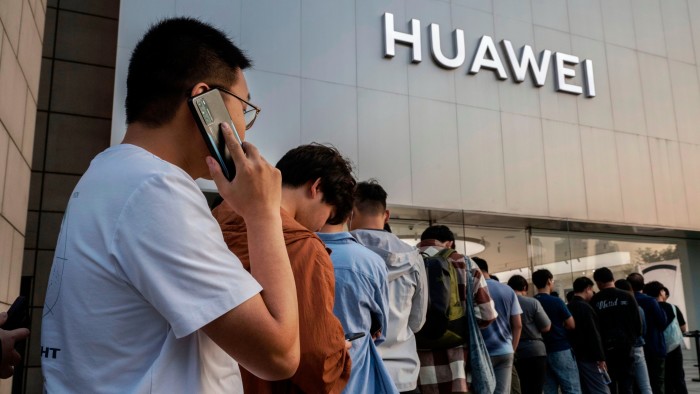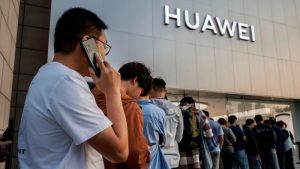Huawei to launch smartphone with own software in latest sign of China-US splintering

Unlock the Editor’s Digest for free
Roula Khalaf, Editor of the FT, selects her favourite stories in this weekly newsletter.
China’s national technology champion Huawei is poised to launch its first flagship phone that can run its own apps on a fully homegrown operating system, in the latest sign of how technology is splintering into competing US and Chinese ecosystems.
The Mate 70 smartphone set to be released on Tuesday will feature HarmonyOS Next, which Huawei hopes to establish as a third major mobile operating system alongside Apple’s iOS and Google’s Android.
It is the latest demonstration that US sanctions designed to enfeeble the company have instead cemented Huawei’s status as a technological juggernaut. Last month, the group reported sales jumped 30 per cent from a year earlier in the first nine months of 2024.
The software launch on the Mate 70 builds on hardware momentum from last year, when the group unveiled the Mate 60, powered by a self-developed and domestically made processor capable of near 5G speeds — a feat many in Washington believed was not possible.
“This is a significant turning point for China, it’s being driven by the fear that the US could cut off everything,” said Paul Triolo, a tech expert at Albright Stonebridge Group.
US sanctions in 2019 cut Huawei’s access to Google Mobile Services and forced the group to roll out its first version of HarmonyOS, which was based on open-source Android code, allowing Android apps to run on its phones.
Meanwhile, Huawei programmers slowly built HarmonyOS Next, which its fans have come to call “Harmony native” or “pure-blood Harmony”. App developers must also rewrite their own apps to run on the new code base.
Getting developers to create a critical mass of “native” apps for Next is seen as crucial to its success. Programmers who spoke with the Financial Times said Huawei had been organising online and offline training camps and crash courses to help them navigate the new platform since last December.
“We have teams to hold developers’ hands and bring them on,” said one Huawei sales staffer, who asked not to be named. “There is support on standby ready to help solve issues,” he said.
The company has focused on getting China’s most commonly used apps ready for launch, he added. Huawei says it already has 15,000 native apps running, including must-haves like Tencent’s WeChat messaging service, Alibaba’s Taobao online mall and Meituan’s food delivery app.
Still, early beta users and developers say Next remains a work in progress. Several key Chinese workplace apps have yet to launch and at least some of the 15,000 apps lack basic functionality, two people said.
“We cannot support WeChat Pay in our app yet. Baidu’s SDK [software developer kit] is also not supported so we cannot use Baidu location service,” complained one developer, who was working on a Next app for a large state-owned group.
For Huawei, rolling out a work-in-progress ecosystem for its flagship model is a gamble that its legions of loyal users will overlook its shortcomings and push developers to catch up.
“It will be a problem for Huawei’s new phone. Users with old Huawei phones can wait to upgrade,” the developer said.
Huawei said the original HarmonyOS already runs on 1bn devices and that some apps built for Next were updating at an almost daily pace.
Rich Bishop, whose company AppInChina publishes international apps in China, said that for now his clients were taking a wait-and-see approach. One client was quoted Rmb2mn ($276,000) by a Chinese developer to reproduce their app for Next.
“Huawei has the largest user base in China, but it’s still going to be difficult to get international developers on board,” he said.
Triolo said he expected Huawei to be able to work through the early challenges. “At this point it is clear that China needs its own operating system,” he said.
#Huawei #launch #smartphone #software #latest #sign #ChinaUS #splintering







